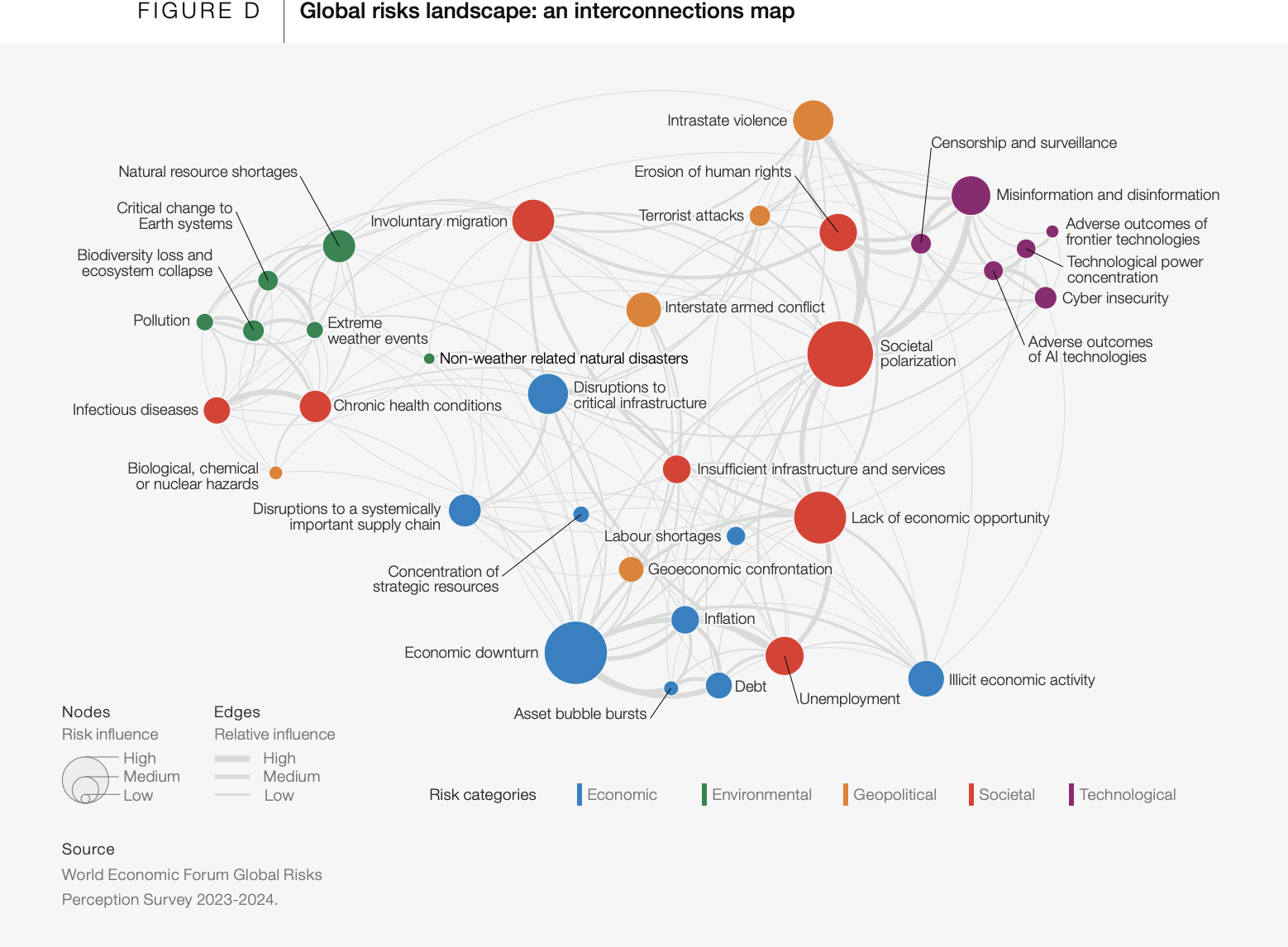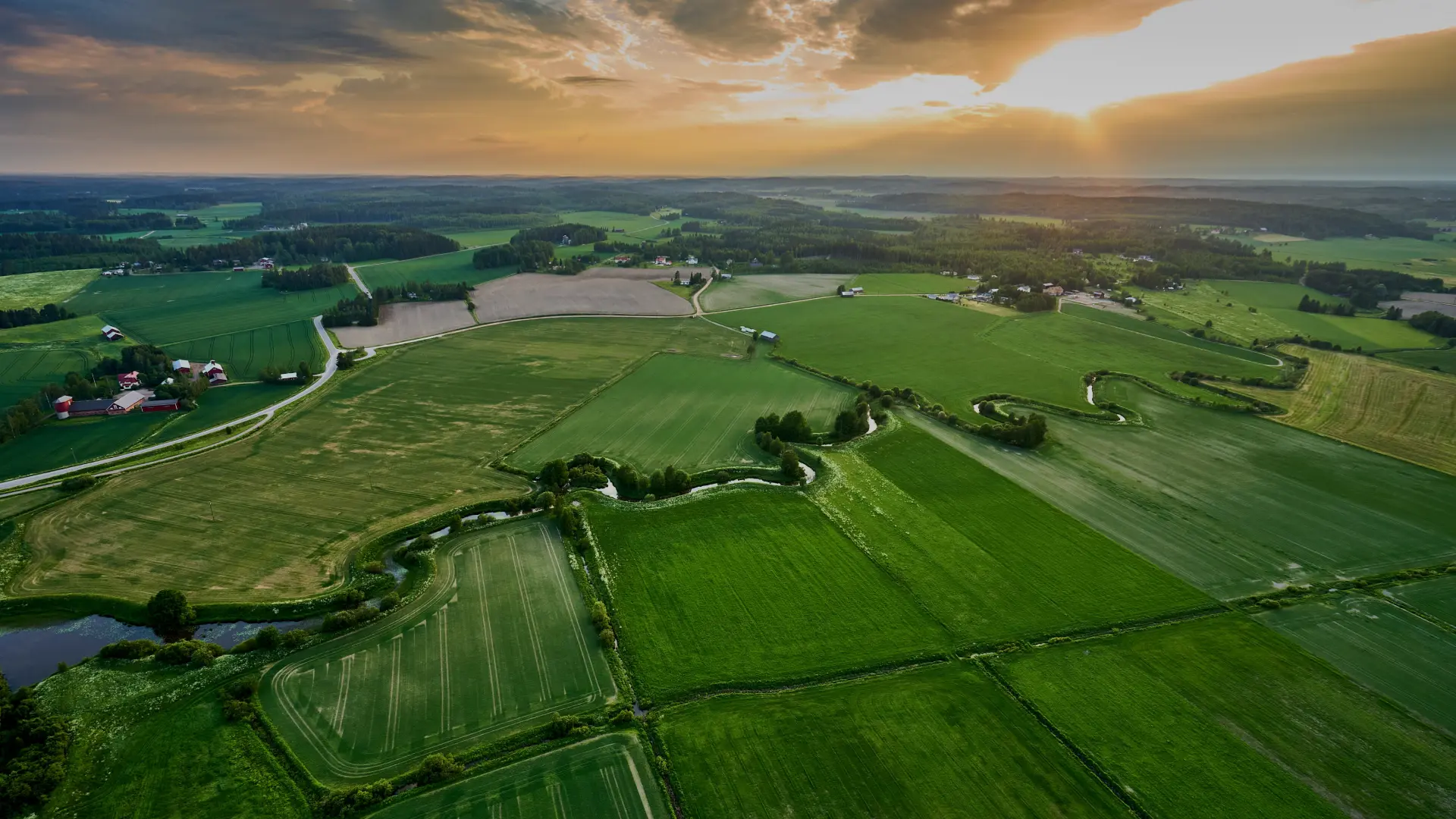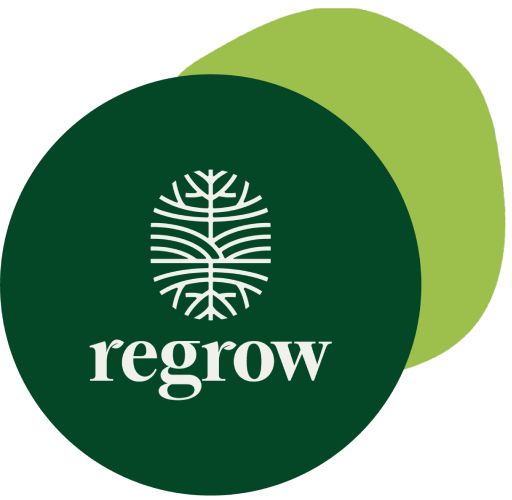When it comes to our climate, time is a luxury no longer available to us. We have reached a point in which we must act immediately to mitigate today’s climate crises while also assessing and addressing longer-term risks. Our resources must be balanced between addressing today’s risks and preparing for tomorrow’s.
No analysis has made that clearer than the World Economic Forum’s 2024 Global Risks Report. This report is an assessment of the risks that threaten the stability of our current environment and the development of our environment and food system in the decades to come.
The authors assess risks in three time periods — this year alone, over a 2-year period, and over a 10-year period — and in four categories: climate change, demographic bifurcation, technological acceleration and geostrategic shifts (though don’t be mistaken, these categories are deeply interrelated, with the latter three are impacted significantly by the first).
We read this report, and here’s Regrow’s TL;DR: the risks are significant across all timeframes.
We need to align on the importance of our climate crisis, accelerate our action together and scale our collective efforts to mitigate these risks, for the sake of today and tomorrow.
And the science tells us that addressing climate change will help us mitigate the risks across the board. Let’s talk about it.
Alignment is key in addressing environmental risks
According to the report, “Two-thirds of GRPS respondents rank extreme weather as the top risk most likely to present a material crisis on a global scale in 2024.” Extreme weather is also the second-most severe risk over the 2-year timeframe and among the top 10 over the 10-year timeframe.

However, survey respondents disagree about the urgency of environmental risks. Younger respondents tend to rank these risks far more highly over the two-year period compared to older age groups, with both risks featuring in their top 10 rankings in the short term. The private sector highlights these risks as top concerns over the longer term, in contrast to respondents from civil society or government who prioritize these risks over shorter time frames.
This is important. Without alignment on the urgency of addressing these risks, it’ll be difficult for us to allocate resources and accelerate solutions.
This is especially true in the agriculture and food industries, which are broad in scope, geographic range, stakeholder resources and potential for impact.
For example, if a government prioritizes short-term climate action in agriculture, but private companies don’t follow suit with climate-smart programs and funding, progress will stall. If a younger faction supports climate action in voting and lobbying efforts, but the older faction doesn’t respond with support for valid legislation, then climate action becomes a polarizing political issue rather than a global environmental one.
This degree of alignment, while difficult, is key in scaling our impact and mitigating the risks ahead.
Addressing climate risks will help mitigate others
Have a look at this figure from the Global Risks Report:

You’ll quickly see that all our global risks are interconnected — the Regrow team found a direct line from ‘natural resource shortage’ to ‘inflation’ and ‘economic downturn’ to ‘involuntary migration’ and ‘erosion of human rights.’
Addressing our climate risks is no longer a corporate responsibility issue, or the sole concern of environmentalists. It’s a concern for all of us, across all industries and geographies.
What’s more, the ability and responsibility for change lies on the shoulders of wealthier countries, in more privileged demographics and among more powerful organizations.
How can we mitigate risk in agriculture and food?
When it comes to our food systems, the answer sounds simple (though in execution, it's complex): build agriculture resilience.
As we mentioned in our own 2024 trends report, agriculture resilience is a holistic risk mitigation strategy. Resilience ensures food supply chains are stable, core ingredients can withstand a changing climate, and agricultural lands are in harmony with the rest of our global ecosystem. A resilient food system supports business stability, ecological stability and geopolitical stability.
Put simply, resilience is the next evolution in sustainability leadership and innovation. Without it, we’re putting ourselves, our families, and our planet in dire circumstances.
The World Economic Forum’s 2024 Global Risk Report is scary. Let’s take our fear and turn it into action: by building resilient systems that address today’s risks while building stability for tomorrow.
Learn more about agriculture resilience here, and read our full trends report to see what lies ahead for the food and agriculture sector.



